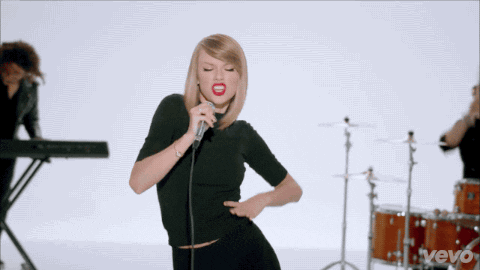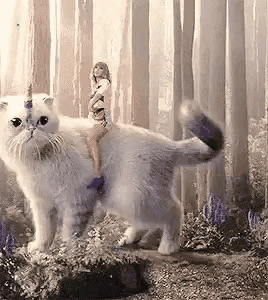Well. Taylor Swift crashed Spotify when she released her latest album Midnights, then crashed Ticketmaster when pre-sale tickets for her Eras tour went live. And in case you missed it, she became the first artist to occupy all ten spots in the Billboard Hot 100’s top 10.
Taylor Swift may be a pop culture icon and skilled performer—but she’s also an amazing songwriter. In this issue, we’re going to look at a particular technique she uses, called the hinged figure.
The story
Let’s start by looking at a few examples of the hinged figure.
This is Me Trying
“This is Me Trying” is a track from her second pandemic album, Evermore. The songs on Evermore (and its sister album Folklore) were about characters, not Taylor Swift. So “This is Me Trying” is about a character who’s admitting mistakes and trying to do better.
Here’s the second verse (emphasis mine):
They told me all of my cages were mental
So I got wasted like all my potential
And my words shoot to kill when I'm mad
I have a lot of regrets about that
I was so ahead of the curve, the curve became a sphere
Fell behind on my classmates, and I ended up here
Pouring out my heart to a stranger
But I didn't pour the whiskey
There are two examples of the hinged figure in this verse.
The first example is “So I got wasted like all my potential.” It leans on two meanings of waste: you can get wasted (drunk) and you can also waste your potential.
The second example is “Pouring out my heart to a stranger but I didn’t pour the whiskey.” Here, there are two meanings of pour: to share your feelings and to pour liquor (get drunk).
And there’s a nice narrative arc in this verse. At the start, the main character is getting wasted but by the end she’s found restraint in not pouring the whiskey. She’s starting to change.
Vigilante Shit
Here’s another example, from “Vigilante Shit,” off her latest album Midnights. It’s a song about getting revenge:
While he was doing lines
And crossing all of mine
Someone told his white collar crimes to the FBI
This hinged figure starts with a reference to cocaine, then spins lines to refer to personal boundaries. That initial drug reference is also reinforced by the mention of white in the third line.
The Great War
Finally, let’s look at “The Great War,” a bonus track from Midnights. It’s about a couple who can’t seem to get along—their relationship is like a war.
You drew up some good faith treaties
I drew curtains closed, drank my poison all alone
Her partner gets a traditionally masculine reference of war and military treaties, while hers is a domestic reference of curtains in a home. We gather that he’s trying to make it work, but she’s shutting down the conversation and stewing in resentment. That’s a lot of meaning to pack into two short lines.
Get a story in your inbox every other Sunday. My promise: all story, no spam.
Why it works
I heard about the hinged figure on Switched On Pop, in their analysis of Evermore. They define the hinged figure as “a double lyrical figure that goes in two separate directions.” 1
That definition works well, especially the last part about going in different directions. It’s feeling like the song is taking you in one direction—but then it suddenly takes you somewhere else. It keeps you on your toes, keeps your attention. (See what I did there?)
So what makes the hinged figure work?
An idiomatic expression: those quirky expressions that don’t have literal translations. They make English a beast to learn if you’re not a native speaker. Things like “getting wasted” or “doing lines” or “drawing curtains.”
Playing with the meaning of one word: waste or line or draw and the different ways it can be used in idiomatic expressions. This is the hinge in the hinged figure.
Choosing two meanings that are quite different, if not completely contradictory, and pairing them.
What we can learn from it
Having spent a few weeks digging into the hinged figure, the question naturally came up: How do you write a hinged figure? Beyond knowing about the three pieces that go into it, that is.
The answer: You pay very close attention to language.
For example, here’s a riff on racing:
Racing heart
Race to the bottom
Off to the races
Arms race
Drag race2
So maybe a doomed relationship is “we were off to the races, but we didn’t know it was to the bottom.” A love triangle might be “you made my heart race but now we’re locked in an arms race.”
Ehhh. I’m no TSwift, that’s for sure.
Or how about rats?
Rat race
Rat’s ass
Smell a rat
Rat on [someone]
I imagine an online course for people who want to start freelancing: “You’re stuck in the rat race but you don’t give a rat’s ass.”
Okay, that’s not great either. But they’re fun to write, and maybe that’s the real point.
Think of it this way: the hinged figure is another tool in the writer’s toolbox. The examples—the idioms, the expressions, the self-awareness of how words are used to different effect—those are the nails, screws, nuts and bolts we can start to play with.3
Start collecting.
Share this newsletter like it’s the hot new single from the latest TSwift album.
Switched On Pop also provides these older examples of the hinged figure:
"But by day I make the cars and by night I make the bars"
--Detroit City, by Bobby Bare (1963)
"She didn't come here for the money, she came here for the change"
--She Came Here for the Change, by Ronnie Milsap (1975)
"While he's making love, I'm making believe"
--Making Believe, by Loretta Lynn (1976)
Those are all country music songs, so it’s not surprising that the hinged figure shows up in Taylor Swift’s writing. She started in country music, and it’s nice that the technique has bubbled up into her later work, in genres like indie and pop.
Switched On Pop credits the term “hinged figure” to the essay "Figure It Out: The Linguistic Turn in Country Music" by Jimmie N. Rogers and Miller Williams in Country Music Annual 2000. The book was published by University Press of Kentucky but appears to be out of print.
Thanks to RuPaul, drag race now has double potential in a hinged figure, as a race between two fast cars and as a competition between drag queens.
I collected some hinged figure songs into a playlist. You can listen on Spotify.





